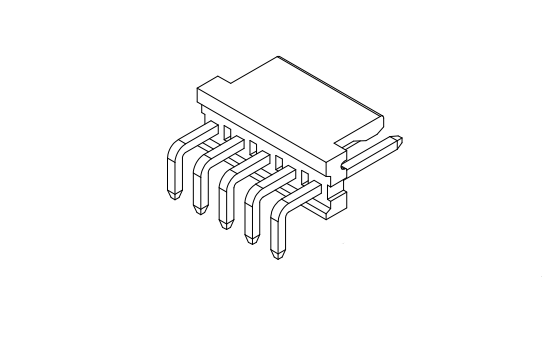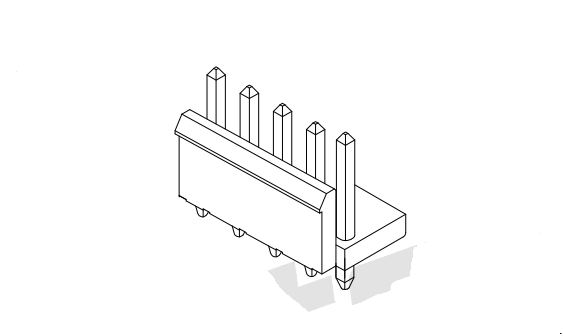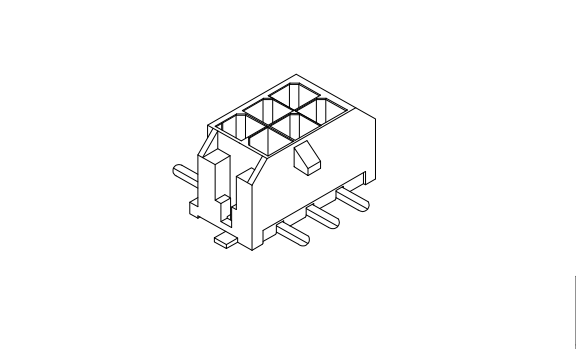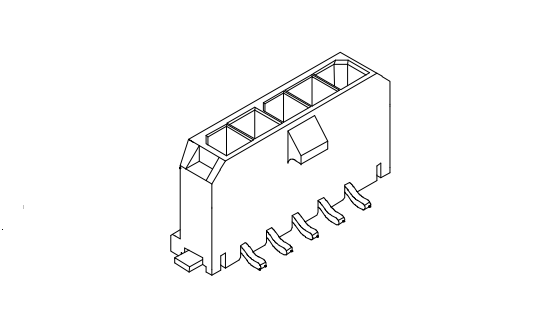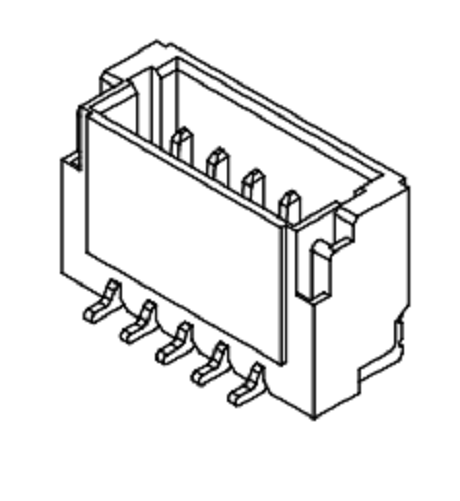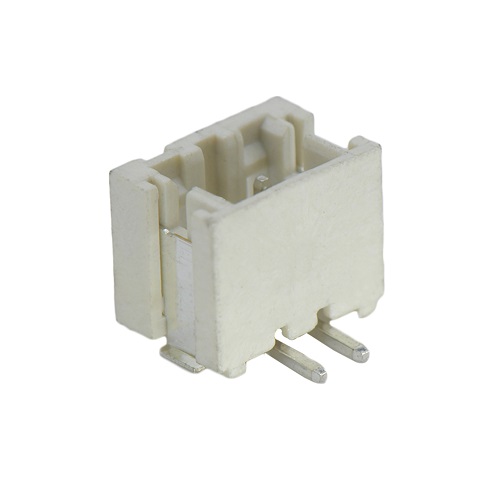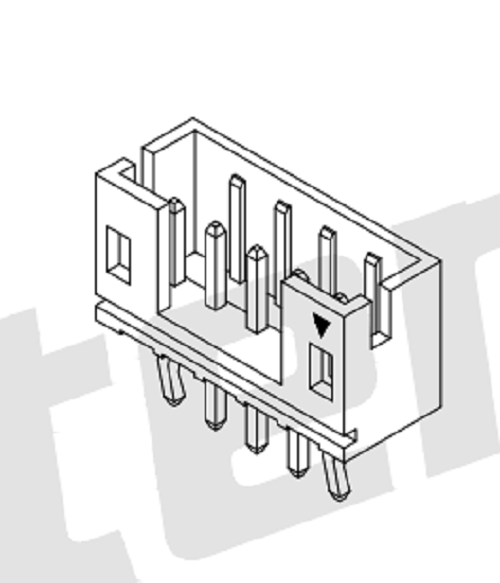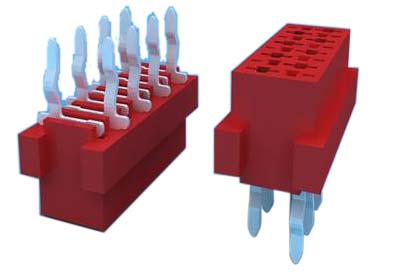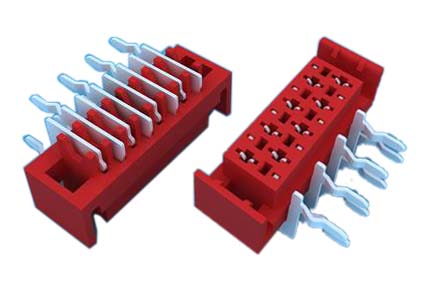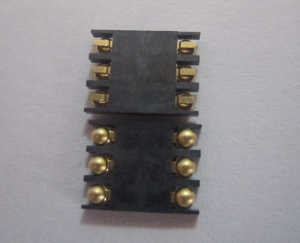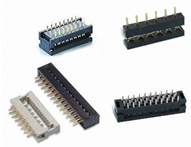In summary, the PLCC connector is a versatile and reliable component that plays a crucial role in establishing electrical connections between integrated circuits and circuit boards. With its compact size, high performance, and compatibility with various applications, the PLCC connector is a popular choice for engineers and designers working in the electronics industry.
Yes, there are different socket types available for PLCC (Plastic Leaded Chip Carrier) connectors. These socket types are designed to accommodate the specific needs and requirements of different applications. Some of the common socket types used with PLCC connectors include:
ZIF (Zero Insertion Force) Socket: ZIF sockets are designed to enable easy and secure insertion and removal of the PLCC connector. They feature a lever or mechanism that allows the user to open and close the socket without applying excessive force. ZIF sockets are preferred in applications where frequent replacement or testing of integrated circuits is required.
Standard Socket: Standard sockets are the most commonly used type of socket for PLCC connectors. They provide a secure and reliable connection between the integrated circuit and the circuit board. Standard sockets may require a tool or force to insert and extract the PLCC connector.
Screw Lock Socket: Screw lock sockets are designed with screws or locking mechanisms to provide additional stability and secure the PLCC connector in place. They are commonly used in applications where vibration or movement may occur, ensuring a reliable and stable connection.
Push Button Socket: Push button sockets feature a push-button mechanism that allows for easy insertion and extraction of the PLCC connector. These sockets are commonly used in applications where quick and frequent replacement of integrated circuits is required.
SMT (Surface Mount Technology) Socket: SMT sockets are designed for surface mount applications, where the PLCC connector is directly mounted on the surface of the circuit board. These sockets eliminate the need for through-hole soldering, saving space on the circuit board and offering improved electrical performance.
Through-Hole Socket: Through-hole sockets are designed with pins that are inserted through holes on the circuit board and soldered on the other side. These sockets provide a sturdy and reliable connection and are commonly used in applications where mechanical strength is required.
The choice of socket type depends on the specific application requirements, including ease of installation, replacement, stability, and electrical performance. Engineers and designers can select the most suitable socket type based on these factors to ensure optimal performance and reliability of the PLCC connector in their applications.
3.Main purposes and application areas The PLCC (Plastic Leaded Chip Carrier) connector is a widely used component in the electronics industry. It is known for its versatility, reliability, and ease of use. The main purpose of the PLCC connector is to establish electrical connections between integrated circuits (ICs) and circuit boards. It provides a secure and stable connection, ensuring efficient signal transmission and data transfer within electronic devices.
The PLCC connector finds application in various areas and industries, including:
Computers and laptops: PLCC connectors are commonly used in computers and laptops for connecting ICs to the motherboard. They provide a reliable interface for data transfer between different components, such as processors, memory modules, and expansion cards. The compact size and high pin count capability of the PLCC connector make it suitable for space-constrained computer systems.
Consumer electronics: PLCC connectors are widely used in consumer electronic devices, such as televisions, audio systems, and gaming consoles. They enable the connection of various ICs and components, facilitating the functionality and performance of these devices. The PLCC connector's robust design ensures a stable and secure connection, even in demanding consumer electronic applications.
Automotive electronics: PLCC connectors are employed in automotive electronics for connecting ICs and other electronic components in vehicles. They play a crucial role in enabling communication and data transfer between different systems, such as engine control units (ECUs), infotainment systems, and safety modules. The PLCC connector's ability to withstand vibrations, temperature fluctuations, and harsh environments makes it suitable for automotive applications.
Industrial control systems: PLCC connectors are utilized in industrial control systems for connecting ICs and control modules. They provide a reliable interface for data exchange and communication within complex automation and control systems. The PLCC connector's robust construction and high-performance capabilities ensure the stability and integrity of control signals in industrial environments.
Telecommunications equipment: PLCC connectors are commonly used in telecommunication devices, such as routers, switches, and network equipment. They enable the connection of various ICs and modules, supporting data transmission and signal processing in telecommunications networks. The PLCC connector's high-speed capabilities and compatibility with different interfaces make it suitable for high-performance telecommunications applications.
In summary, the PLCC connector is a versatile and reliable component that plays a crucial role in establishing electrical connections between ICs and circuit boards. Its widespread use in various industries and applications is a testament to its performance, durability, and compatibility. Engineers and designers rely on PLCC connectors to ensure efficient and reliable signal transmission in electronic devices and systems.
4. How durable and reliable is it? The PLCC (Plastic Leaded Chip Carrier) connector is highly regarded for its durability and reliability in the electronics industry. It is designed to withstand various environmental factors and provide a long-lasting connection between integrated circuits and circuit boards.
Durability: The PLCC connector is built to endure rigorous conditions and maintain its functionality over an extended period. It is constructed using high-quality materials that can withstand mechanical stress, temperature variations, and vibrations. This ensures that the connector remains intact and operational, even in demanding applications such as automotive electronics or industrial control systems.
Reliability: The PLCC connector is known for its reliable performance in establishing and maintaining electrical connections. It offers excellent contact resistance, minimizing signal loss or interruption during data transmission. The connector's pin design and arrangement provide a secure and stable connection, preventing any connection failures or intermittent contact issues.
Additionally, the PLCC connector is designed to resist corrosion and oxidation, enhancing its reliability over time. This feature is particularly important in applications exposed to moisture, humidity, or harsh environmental conditions.
To further enhance its reliability, the PLCC connector undergoes rigorous testing and quality control measures during the manufacturing process. These tests ensure that the connector meets industry standards and specifications, guaranteeing its performance and reliability in real-world applications.
Furthermore, the compact size and low-profile design of the PLCC connector contribute to its reliability. The connector's small form factor minimizes the risk of accidental damage or disconnection, enhancing its overall durability.
Overall, the PLCC connector's durability and reliability make it a preferred choice for designers and engineers in various industries. Its ability to withstand harsh conditions, maintain stable electrical connections, and provide long-term performance ensures the smooth operation of electronic devices and systems.
5. How does it work? The PLCC (Plastic Leaded Chip Carrier) connector is a crucial component in the electronics industry. It facilitates the electrical connection between integrated circuits (ICs) and circuit boards. The working principle of the PLCC connector can be described as follows:
Design: The PLCC connector consists of a plastic body with metal leads or pins. It is available in different pin counts, ranging from 20 to 84 pins, depending on the specific application requirements. The pins are evenly spaced along the four sides of the connector, allowing for a secure and reliable connection.
Insertion: To use the PLCC connector, the integrated circuit that needs to be connected is first aligned with the connector pins. The IC is then carefully inserted into the connector, ensuring that each pin corresponds to its respective contact pad on the IC.
Contact: Once the IC is inserted, the pins of the PLCC connector make contact with the corresponding contact pads on the IC. This establishes the electrical connection between the IC and the circuit board. The PLCC connector's pins are designed to provide a secure and stable connection, minimizing the risk of signal loss or intermittent contact issues.
Locking Mechanism: Some PLCC connectors feature a locking mechanism to ensure that the IC remains securely in place. This mechanism may consist of a lever, a screw, or a push-button release. It prevents accidental disconnection of the IC and provides added stability.
Soldering: After the IC is inserted and the electrical connection is established, the PLCC connector is soldered onto the circuit board. This soldering process ensures a permanent and reliable connection between the IC and the circuit board, further enhancing the signal transmission and overall performance.
Removal: When the IC needs to be replaced or removed, the locking mechanism of the PLCC connector is released, allowing for easy extraction of the IC. The connector can then be reused for the insertion of a new IC.
The PLCC connector's design and working principle make it a versatile and reliable component in the electronics industry. It enables the efficient transfer of signals and data between ICs and circuit boards, ensuring the optimal performance of electronic devices and systems.
6. How to install and use? Installing and using a PLCC (Plastic Leaded Chip Carrier) connector is a straightforward process that requires attention to detail and proper handling to ensure a secure and reliable connection. Here is a comprehensive guide on how to install and use a PLCC connector:
Preparation: Before installing the PLCC connector, ensure that you have the necessary tools and equipment, including the ICs to be connected, a soldering iron, solder, and any required adapters or accessories.
Alignment: Align the PLCC connector with the corresponding contact pads on the circuit board. Ensure that the pins of the connector are properly aligned with the contact pads to establish a correct connection.
Insertion: Carefully insert the IC into the PLCC connector, making sure that each pin of the IC aligns correctly with the corresponding pin of the connector. Apply gentle pressure to seat the IC securely in the connector.
Soldering: Once the IC is properly inserted into the PLCC connector, solder the pins of the connector to the contact pads on the circuit board. Use a soldering iron to apply solder to each pin, ensuring a strong and reliable electrical connection.
Inspection: After soldering, inspect the connection to ensure that there are no solder bridges or cold joints. Check for proper alignment and visual confirmation of soldered connections.
Testing: Before using the electronic device, perform a functionality test to verify that the ICs are properly connected and that the PLCC connector is functioning correctly. Test for signal transmission and data transfer to ensure the integrity of the connection.
Maintenance: Regularly inspect the PLCC connector for any signs of damage, corrosion, or loose connections. If any issues are detected, address them promptly to maintain the performance and reliability of the connector.
Removal: If the IC needs to be replaced or removed, carefully desolder the pins of the PLCC connector using a soldering iron. Gently lift the IC out of the connector and clean any residual solder from the pins for future use.
In conclusion, installing and using a PLCC connector involves proper alignment, insertion, soldering, testing, and maintenance procedures to ensure a secure and reliable connection between integrated circuits and circuit boards. By following these steps carefully and attentively, you can effectively utilize PLCC connectors in various electronic applications with confidence and reliability.
The main products are board to board connector,
Wire To Board Connector, wire to wire connector ,
Pin Header ,female header, Box Header ,latch eject header, Din416 12,machined header and IC Socket ,
Idc Connector,D-SUB,RJ45,SCSI,IEEE 1394 ,
Battery Holder battery contact,
Battery Connector ,automobile connector and OBD connector, and a variety of terminal machine internal wire and computer peripheral wire and other products, the company's products are in line with the European Union ROHS and REACH environmental protection requirements, most of the products are UL certificated, our certification number is E472792.We have been IS09001 and ISO14001 certified.

